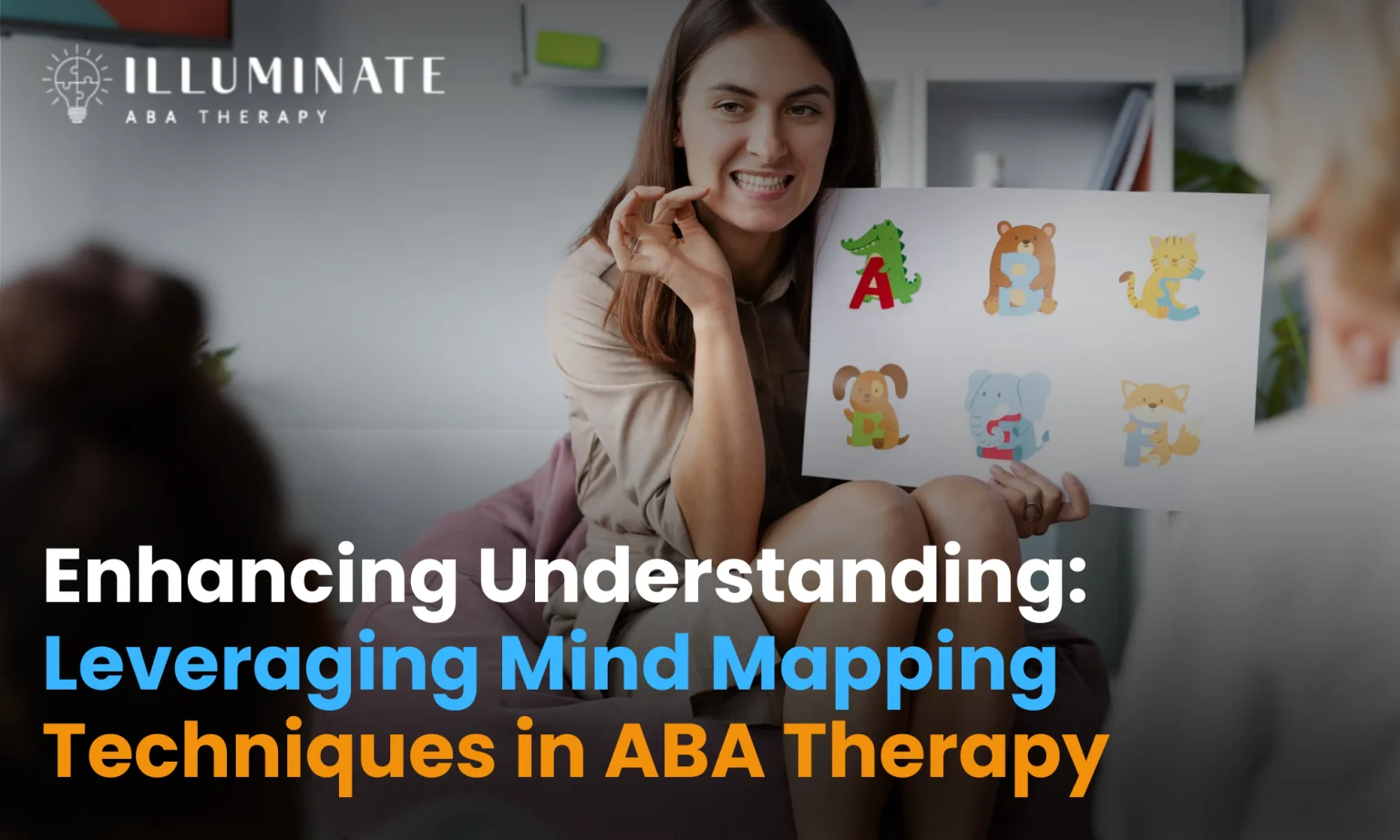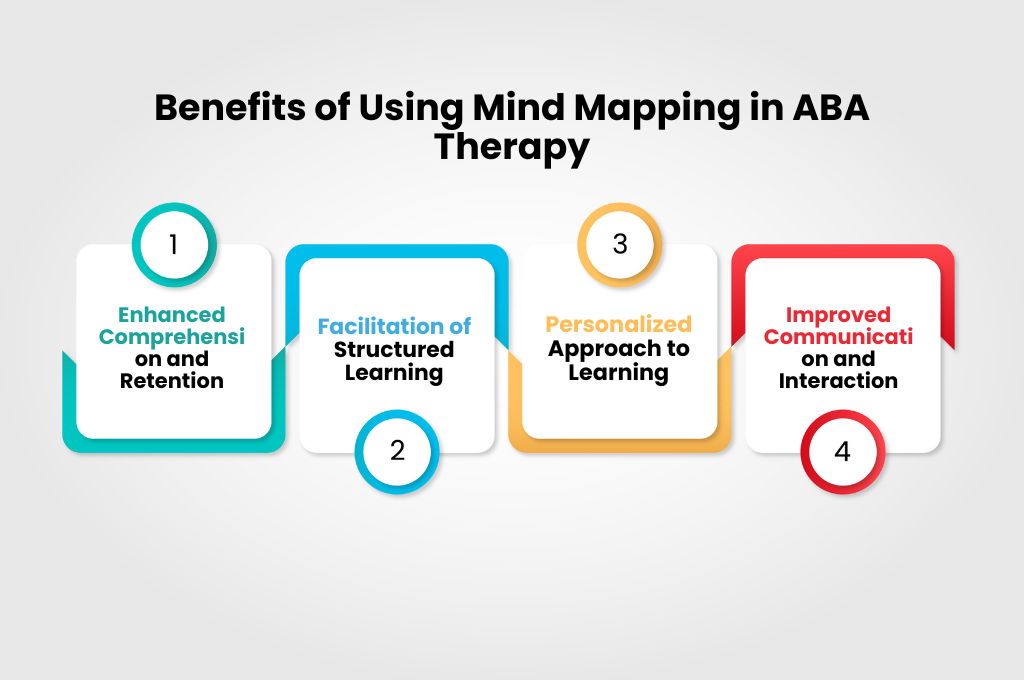Enhancing Understanding: Leveraging Mind Mapping Techniques in ABA Therapy
ABA TherapyJuly 17, 2025

Understanding ABA Therapy
ABA therapy, or Applied Behavior Analysis therapy, is a widely recognized approach for individuals with autism spectrum disorder (ASD). This therapy focuses on improving specific behaviors and skills by applying principles of learning theory. Let's delve into the overview of ABA therapy and the importance of ABA programs and support.
Overview of ABA Therapy
ABA therapy is a structured and evidence-based intervention that aims to address behavioral challenges and enhance learning opportunities for individuals with ASD. It involves breaking down complex skills into smaller, manageable tasks and using positive reinforcement to encourage desired behaviors.
One key aspect of ABA therapy is its emphasis on data collection and analysis to track progress and make data-driven decisions. Behavior analysts utilize various techniques such as discrete trial training, naturalistic teaching, and reinforcement schedules to tailor interventions to the individual's unique needs and abilities.
Importance of ABA Programs and Support
ABA programs play a crucial role in supporting individuals with ASD in reaching their full potential. These programs are designed to target specific behaviors, communication skills, social interactions, and adaptive living skills. By providing structured and consistent interventions, ABA therapy helps individuals with ASD develop the necessary skills to lead more independent and fulfilling lives.
Moreover, the inclusion of ABA support within educational settings, home environments, and community settings enhances the continuity of care and promotes generalization of skills across different contexts. The collaborative efforts of behavior analysts, caregivers, educators, and therapists create a holistic support system that maximizes the effectiveness of ABA interventions.
In order to further enhance the learning experience and outcomes in ABA therapy, integrating mind mapping techniques can offer additional benefits for individuals with autism. Mind maps provide a visual and structured way to organize information, analyze behaviors, and facilitate skill development, ultimately contributing to a more personalized and effective ABA therapy approach.
Mind Mapping Techniques in ABA Therapy
Exploring the utilization of mind mapping techniques in ABA therapy sheds light on innovative strategies to enhance learning and development for individuals with autism. By incorporating structured visual representations, mind mapping has proven to be a valuable tool in aiding comprehension and retention of information.
Introduction to Mind Mapping for Learning
Mind mapping is a visually stimulating method that involves organizing information in a hierarchical structure, starting from a central idea and branching out into related concepts. This approach fosters a relationship between ideas and facilitates a clearer understanding of complex topics. In the context of ABA therapy, mind mapping serves as a dynamic framework for visualizing behavior patterns, skill acquisition processes, and intervention strategies.
Benefits of Using Mind Mapping in ABA Therapy

The integration of mind mapping techniques in ABA therapy offers a multitude of benefits to individuals with autism spectrum disorder. These benefits include:
Benefit
Description
Enhanced Comprehension and Retention
Visual representation aids in processing and memorizing information more effectively.
Facilitation of Structured Learning
Hierarchical structure promotes organized thinking and systematic evaluation of behaviors.
Personalized Approach to Learning
Customizable mind maps cater to individual learning styles and preferences.
Improved Communication and Interaction
Visual aids support communication skills development and enhance therapist-client interactions.
By leveraging the power of mind mapping in ABA therapy, therapists and individuals with autism can collaboratively engage in targeted interventions, behavior analyses, and skill-building exercises. Utilizing visual tools to reinforce learning not only enhances educational outcomes but also empowers individuals to actively participate in their therapeutic journey. For more insights on alternative strategies, such as using video modeling to enhance social skills in autism or the role of nutrition in supporting children with autism: an ABA perspective, explore our related resources.
Implementing Mind Maps in ABA Therapy
In the realm of ABA therapy, incorporating mind mapping techniques can significantly enhance the learning process for individuals with autism. Two key aspects of utilizing mind maps in ABA therapy are creating mind maps for behavior analysis and utilizing mind maps for skill development.
Creating Mind Maps for Behavior Analysis
Mind maps serve as powerful visual tools that aid in organizing complex information related to behavior analysis in ABA therapy. By visually mapping out behavior patterns, triggers, and responses, therapists and individuals can gain a comprehensive understanding of the behavior dynamics at play.
Creating mind maps for behavior analysis allows for a structured approach to identifying behavior patterns and designing targeted intervention strategies. These visual representations help in pinpointing specific behaviors, analyzing antecedents and consequences, and tracking progress over time. It provides a clear roadmap for therapists to develop effective behavior modification plans tailored to the individual's needs.
Utilizing Mind Maps for Skill Development
In ABA therapy, skill development plays a crucial role in fostering the overall growth and progress of individuals with autism. Mind maps offer a dynamic and interactive way to outline skill-building objectives and track developmental milestones.
By utilizing mind maps for skill development, therapists can break down larger skills into manageable components, making the learning process more accessible and engaging. These visual aids enable individuals to grasp the sequence of steps involved in mastering a skill, providing a structured framework for practice and reinforcement.
Utilizing mind maps for skill development also facilitates collaboration between therapists, caregivers, and individuals receiving therapy. It allows for clear communication of skill acquisition goals, progress monitoring, and adjustment of intervention strategies based on the individual's responses and outcomes.
Incorporating mind maps in ABA therapy not only enhances the learning experience but also promotes greater engagement, comprehension, and retention of skills. By harnessing the power of visual representation, individuals with autism can navigate behavior analysis and skill development more effectively, paving the way for meaningful progress and growth.
Enhancing Learning Through Mind Mapping
In the realm of ABA therapy, utilizing mind mapping techniques plays a significant role in enhancing learning experiences, especially for individuals with autism. By personalizing mind maps and seamlessly integrating them into ABA sessions, a tailored and effective approach to skill development and behavior analysis is achieved.
Personalizing Mind Maps for Individuals with Autism
Personalization is key when creating mind maps for individuals with autism in ABA therapy. Tailoring the content, colors, and structure of the mind map to suit the individual's preferences and learning style can significantly enhance engagement and comprehension. By incorporating symbols, images, and keywords that resonate with the individual, the mind map becomes a powerful visual tool for reinforcing concepts and fostering understanding.
Creating a personalized mind map involves understanding the unique needs and strengths of the individual with autism. Addressing sensory sensitivities, communication preferences, and areas of interest can help make the mind map more appealing and effective. Moreover, using a clear and structured layout with minimal distractions can aid in maintaining focus and clarity during ABA sessions.
When personalizing mind maps for individuals with autism, it's essential to consider their specific goals and objectives in ABA therapy. Whether it's improving communication skills, enhancing social interactions, or developing self-regulation abilities, the mind map should serve as a customized roadmap to facilitate targeted skill development and behavior modification.
Integrating Mind Maps into ABA Sessions
Integrating mind maps seamlessly into ABA sessions can optimize the learning experience and create a cohesive therapeutic approach. During behavior analysis, mind maps can be used to visually represent behavior patterns, triggers, and reinforcements, aiding both the therapist and the individual in identifying and analyzing target behaviors effectively.
In skill development activities, mind maps act as interactive guides that break down complex tasks into manageable steps. By presenting information in a visual and structured format, individuals with autism can better understand the sequence of actions required to master a skill or behavior. The interactive nature of mind maps encourages active participation and independent decision-making, empowering individuals to take ownership of their learning journey.
By incorporating mind maps into ABA sessions, therapists can enhance engagement, promote retention of information, and foster independent thinking skills in individuals with autism. The visual and interactive nature of mind maps transcends traditional teaching methods, offering a dynamic and personalized approach to learning that aligns with the principles of ABA therapy.
When using mind mapping techniques in ABA therapy to enhance learning for individuals with autism, the emphasis lies on customization, engagement, and empowerment. By personalizing mind maps and seamlessly integrating them into ABA sessions, therapists can create a nurturing and impactful learning environment that supports the unique needs and abilities of each individual.


